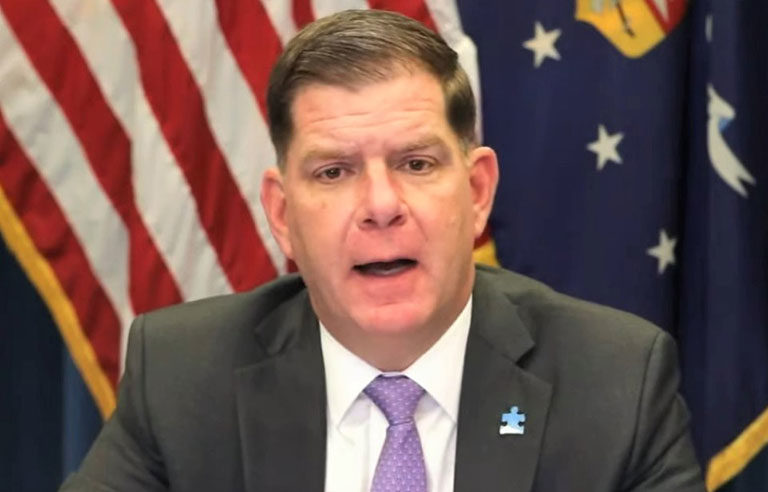Secretary Walsh: OSHA’s forthcoming ETS to cover health care workers

‘Take the steps necessary’
In response to a question from Rep. Joe Courtney (D-CT), who sponsored the Workplace Violence Prevention for Health Care and Social Services Act that passed in the House on April 16, Walsh said he wants OSHA “to take the steps necessary” to complete a workplace violence standard.
As of Nov. 9, OSHA’s potential regulation on the prevention of workplace violence in health care and social assistance was in the pre-rule stage, but a Small Business Advocacy Review panel was expected to convene sometime in the near future, one of the next steps in the regulatory process.
Rep. John Yarmuth (D-KY) asked about DOL’s efforts to help end black lung disease in miners.
The Nov. 9 regulatory agenda, the final one under the Trump administration, showed a Mine Safety and Health Administration rule seeking to reduce exposure to respirable crystalline silica – a key driver of a surge in black lung cases – was in the proposed rule stage.
“We certainly are committed to finding ways that workplaces are safer and that black lung doesn’t impact or affect people,” Walsh said. “At this point, in 2021, there’s no reason why we don’t have better technology to be able to make sure that workers are safe when they go mining, and that their family members have them around for a long time.”
When asked about OSHA and the needed number of inspectors by Rep. Alma Adams (D-NC), Walsh said, “I think we need to get to a point where OSHA is doing not only inspections, but helping companies to make sure they have safe working conditions for their workers. … OSHA, for the most part, goes out to a (workplace) after a crisis occurs, after a tragedy happens.”
He added that he would like enough staff so OSHA could “work with companies across America to have safe workplaces before they’re dangerous” and said he hoped that someday OSHA might have enough people to visit worksites “once every two years, not once every 100.”
Post a comment to this article
Safety+Health welcomes comments that promote respectful dialogue. Please stay on topic. Comments that contain personal attacks, profanity or abusive language – or those aggressively promoting products or services – will be removed. We reserve the right to determine which comments violate our comment policy. (Anonymous comments are welcome; merely skip the “name” field in the comment box. An email address is required but will not be included with your comment.)

